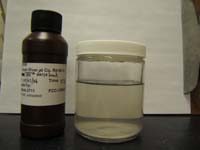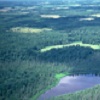Minnesota Water Science Center

Emerging Contaminant and Endocrine StudiesMinnesota PROJECTSUSGS IN YOUR STATEUSGS Water Science Centers are located in each state. 
|
Occurrence of Endocrine Active Chemicals in Minnesota LakesEndocrine active chemicals (EACs) mimic the effects of hormones in animals and cause adverse physiologic effects such as changes to the reproductive system or to the growth and development of an organism. EACs, do not usually exhibit acute toxicity at the levels normally found in the environment, but instead can alter the normal functioning and growth of the exposed organism at very low concentrations. Previous investigations of in Minnesota have shown that EACs are widespread at low concentrations in rivers. The studies also demonstrated that fish in these waters show signs of endocrine disruption. In this study, commissioned by Minnesota lawmakers in the 2007 Legislative Session, twelve lakes in Minnesota were sampled for the presence and concentrations of a diverse group of EACs and other chemicals in surface water and sediment. In addition, caged and wild-caught fish from these bodies of water were examined for evidence of endocrine disruption and environmental stress. The lakes and rivers were selected to represent a wide range of land use and development. Two lakes without development were selected as reference lakes. Three rivers in south-central Minnesota and one in western Minnesota were also included in the study. Water and sediment samples from each lake were analyzed for 110 chemicals, including many known or suspected EACs including pharmaceuticals, hormones, pesticides, personal care products, and compounds commonly associated with wastewater contamination. Several species of wild fish collected from each location were assessed for the induction of the protein vitellogenin (VTG) in male fish (VTG is the protein associated with reproduction in female fish and an indicator of feminization in male fish). These fish also were assessed for changes in body, liver, and reproductive organ weight, and histological abnormalities (changes in the abundance of cell types in the liver and reproductive organs). Caged minnows that were deployed at each location for three weeks were also analyzed with the same suite of endpoints for evidence of endocrine disruption. This study shows that endocrine disrupting chemicals that include pharmaceuticals and other contaminants typically associated with wastewater are present in the surface water and sediment of Minnesota lakes not receiving effluent from wastewater treatment plants. It also shows that fish in lakes are being exposed to estrogenic chemicals in their environment, although it is unclear which chemicals caused these effects in wild fish collected in this investigation. The results of this investigation are consistent with previous studies done on the Mississippi River and its tributaries, where many of the same contaminants were found in the surface water and sediment and fish were found to exhibit similar forms of endocrine disruption. It is not known how long these contaminants persist in the aquatic environment or how rapidly they break down. Although the results of this study suggest that they are accumulating in lake sediment, further study is needed to understand the overall fate of these chemicals in lakes and rivers. Minnesota Pollution Control Agency Legislative Report Related Media Endocrine Disruptors and Intersex Fish in Minnesota Lakes
Endocrine Disruptors and Intersex Fish in Minnesota Lakes
Endocrine disrupting chemicals were identified in all of the 11 Minnesota lakes studied by the U.S. Geological Survey, St. Cloud State University and the Minnesota Pollution Control Agency. Female characteristics were observed in male fish in most of the lakes studied. USGS scientists Jeffrey Writer talks to us about what's going on. ProductsWriter, J.H., Barber, L.B., Brown, G.K., Taylor, H.E., Kiesling, R.L., Ferrey, M.L., Jahns, N.D., Bartell, S.E., and Schoenfuss, H.L., 2010, Anthropogenic tracers, endocrine disrupting chemicals, and endocrine disruption in Minnesota lakes: Science of the Total Environment, v. 409, no. 1, p. 100-111, doi:10.1016/j.scitotenv.2010.07.018. Barber, L.B., Writer, J.H., Keefe, S.H., Brown, G.K., Ferrey, M.L., Jahns, N.D., Kiesling, R.L., Lundy, J.R., Poganski, B.H., Rosenberry, D.O., Taylor, H.E., Woodruff, O.P., and Schoenfuss, H.L., 2012, Endocrine disrupting chemicals in Minnesota lakes - water-quality and hydrological data from 2008 and 2010: U.S. Geological Survey Open-File Report 2012-1124, 53 p. Ferrey, M., Schoenfuss, H.L., Poganski, B.H., Jahns, N.D., Martinovic, D., Barber, L.B., Writer, J.H., Keefe, S.K., Brown, G.K., Taylor, H.E., Woodruff, O.P., Rosenberry, D.O., Kiesling, R.L., and Lundy, J.R., 2012, Endocrine active compound monitoring in Minnesota lakes, 2009-2011: Lake habitat and land use: Minnesota Pollution Control Agency, Legislative Report tdr-g1-08b, St. Paul, MN, 11 p. |